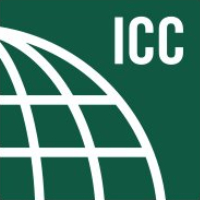
Ebola and Fire/EMS Professionals: What You Need To Know
![]() The guidance provided in this document is based on current knowledge of Ebola. Updates will be posted as needed on the CDC Ebola webpage.
The guidance provided in this document is based on current knowledge of Ebola. Updates will be posted as needed on the CDC Ebola webpage.
Every EMS agency and system, including those that provide non-emergency and/or inter-facility transport, should ensure that their personnel can detect a person under investigation (PUI) for Ebola, protect themselves so they can safely care for the patient, and respond in a coordinated fashion. Many of the signs and symptoms of Ebola are non-specific and similar to those of other common infectious diseases such as malaria, which is commonly seen in West Africa. Transmission of Ebola can be prevented by using appropriate infection control measures.
http://www.cdc.gov/vhf/ebola/pdf/ems-checklist-ebola-preparedness.pdf
- Assess the scene and patient. If advised of Ebola, put on personal protective equipment (PPE), keep patient away from others, and approach with caution.
- All patients should be assessed for symptoms of Ebola (fever of greater than 100.4 degrees Fahrenheit, and additional symptoms such as severe headache, muscle pain, vomiting, diarrhea, abdominal pain, or unexplained hemorrhage). If the patient has symptoms of Ebola, then ask the patient about risk factors within the past 3 weeks before the onset of symptoms, including:
- Contact with blood or body fluids of a patient known to have or suspected to have Ebola
- Residence in—or travel to— a country where an Ebola outbreak is occurring (a list of impacted countries can be accessed at the following link:
http://www.cdc.gov/vhf/ebola/outbreaks/guinea/index.html) - EMS personnel should notify the receiving healthcare facility when transporting a suspected Ebola patient, so that appropriate infection control precautions may be prepared.
- Limit activities that can increase the risk of exposure to infectious material.
- Limit the use of needles and other sharps as much as possible. All needles and sharps should be handled with care and disposed in puncture-proof, sealed containers.
- EMS personnel should wear: Gloves, Gown (fluid resistant or impermeable), Eye protection, Facemask. Additional PPE might be required in certain situations (e.g., large amounts of blood and body fluids), such as double gloving, disposable shoe covers, and leg coverings.
- PPE should be worn upon entry into the scene and continued to be worn until personnel are no longer in contact with the patient. PPE should be carefully removed without contaminating one’s eyes, mucous membranes, or clothing with potentially infectious materials. PPE should be placed into a medical waste container at the hospital or double bagged and held in a secure location. Re-useable PPE should be cleaned and disinfected according to the manufacturer’s reprocessing instructions and EMS agency policies.
- Instructions for putting on and removing PPE have been published online at http://www.cdc.gov/HAI/prevent/ppe.html
- Hand hygiene should be performed immediately after removal of PPE.
- How to clean equipment and vehicles after transporting a patient with suspected Ebola:
- EMS personnel performing cleaning and disinfection should wear recommended PPE and consider use of additional PPE (e.g., rubber boots or shoe and leg coverings).
- Patient-care surfaces are likely to become contaminated and should be cleaned and disinfected after transport.
- A blood spill or spill of other body fluid or substance (e.g., feces or vomit) should be managed through removal of bulk spill matter, cleaning the site, and then disinfecting the site.
- An EPA-registered hospital disinfectant with label claims for viruses that share some technical similarities to Ebola (such as, norovirus, rotavirus, adenovirus, poliovirus)
should be used according to those instructions. After the bulk waste is wiped up, the surface should be disinfected. - Contaminated reusable patient care equipment should be placed in biohazard bags and labeled for cleaning and disinfection according to agency policies. Reusable equipment should be cleaned and disinfected according to manufacturer’s instructions by trained personnel wearing correct PPE.
- EMS agencies should develop policies for monitoring and management of EMS personnel potentially exposed to Ebola.
- EMS agencies should develop sick leave policies for EMS personnel that are non-punitive, flexible and consistent with public health guidance
- Ensure that all EMS personnel, including staff who are not directly employed but provide essential daily services, are aware of the sick leave policies.
- EMS personnel with exposure to blood, bodily fluids, secretions, or excretions from a patient with suspected or confirmed Ebola should immediately:
- Stop working and wash the affected skin surfaces with soap and water. Mucous membranes (e.g., conjunctiva) should be irrigated with a large amount of water or eyewash solution;
- Contact occupational health/supervisor for assessment and access to post-exposure management services; and
- Receive medical evaluation and follow-up care, including fever monitoring twice daily for 21 days, after the last known exposure.
- EMS personnel who develop sudden onset of fever, intense weakness or muscle pains, vomiting, diarrhea, or any signs of hemorrhage after an unprotected exposure a patient with suspected or confirmed Ebola should:
- Not report to work or immediately stop working and isolate themselves
- Notify their supervisor, who should notify local and state health departments
- Contact occupational health/supervisor for assessment and post-exposure management







